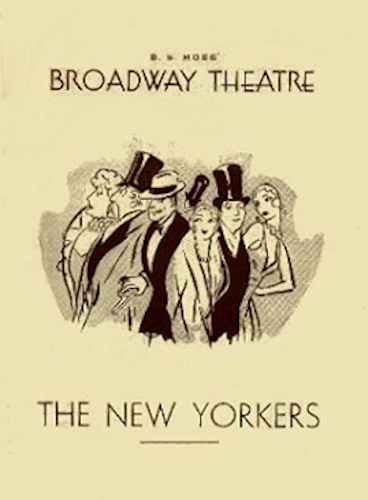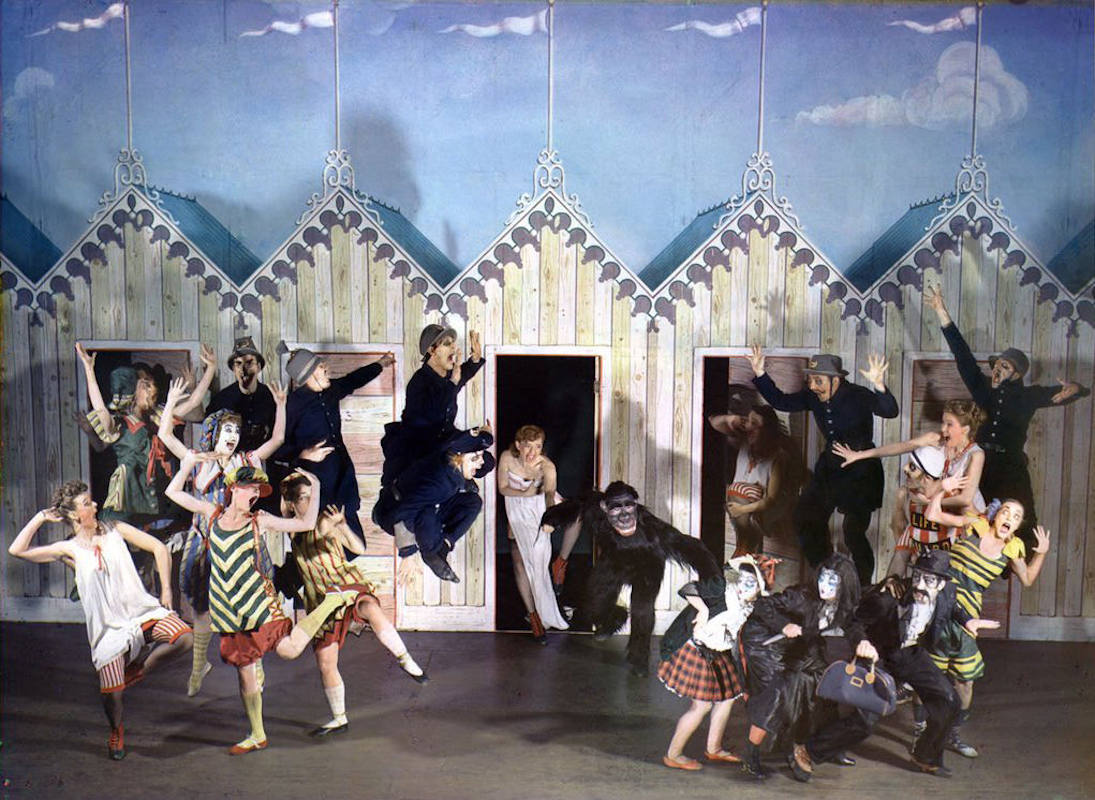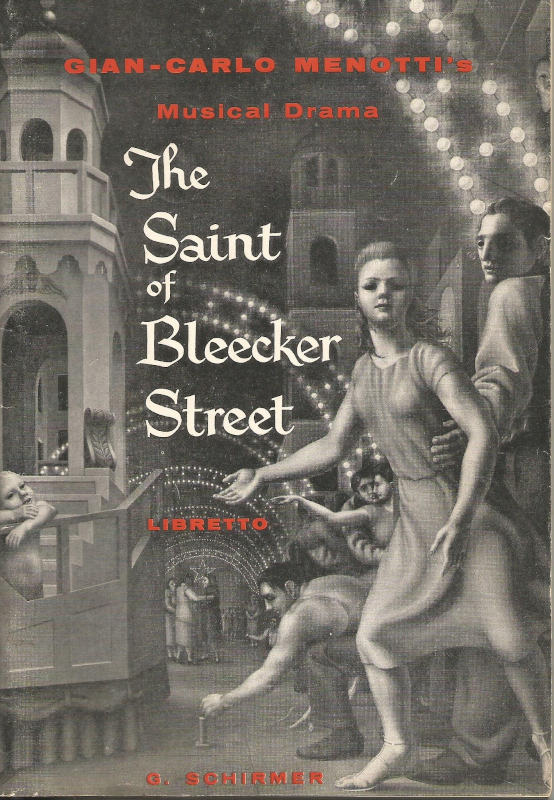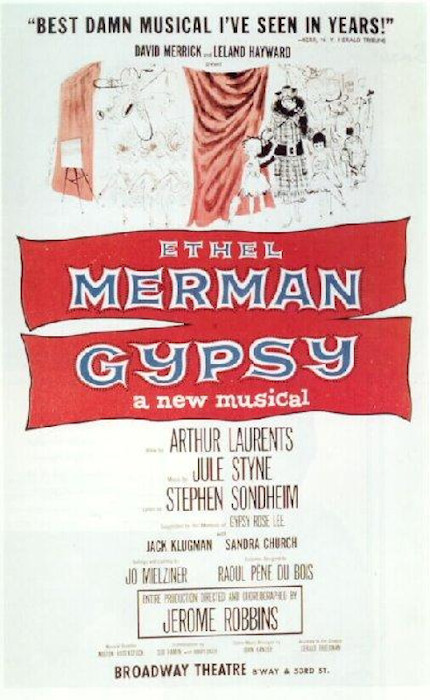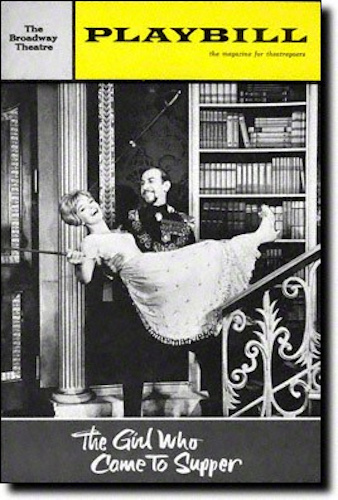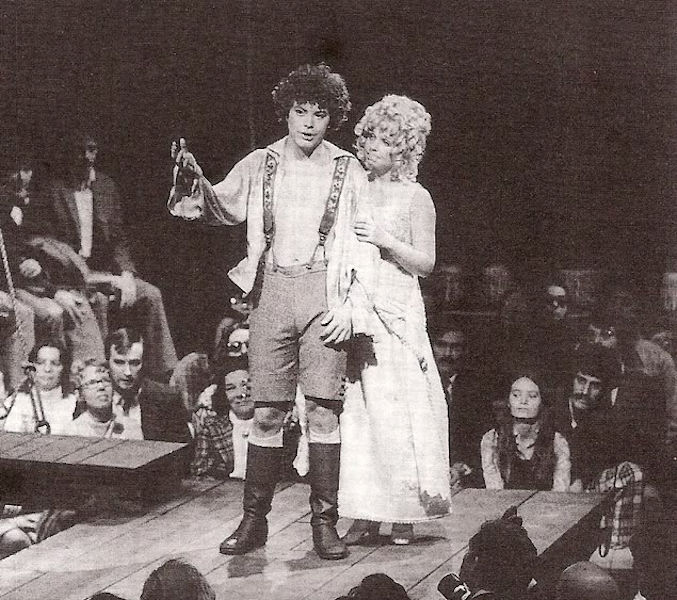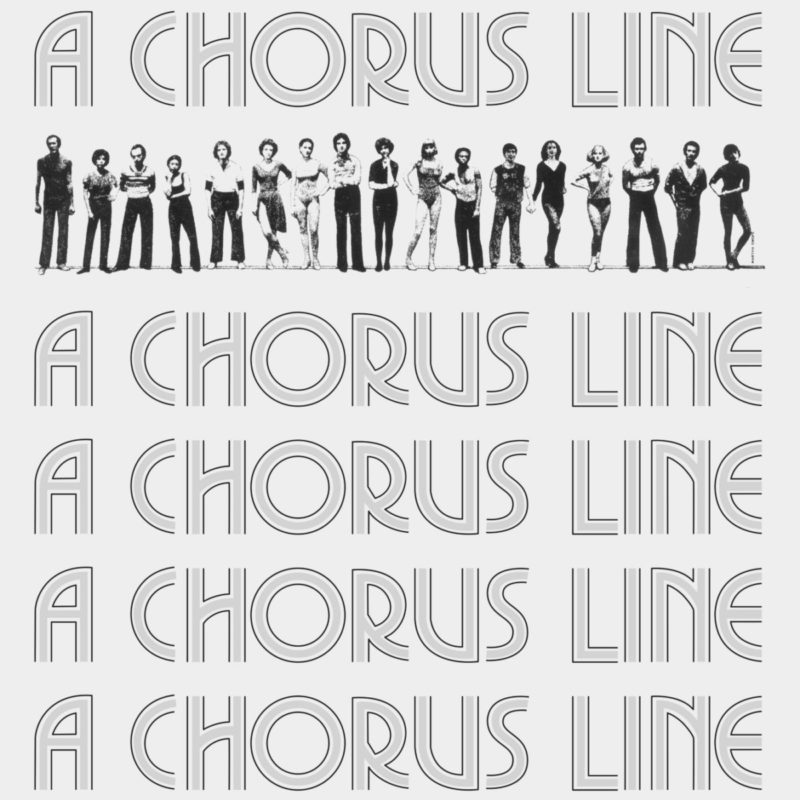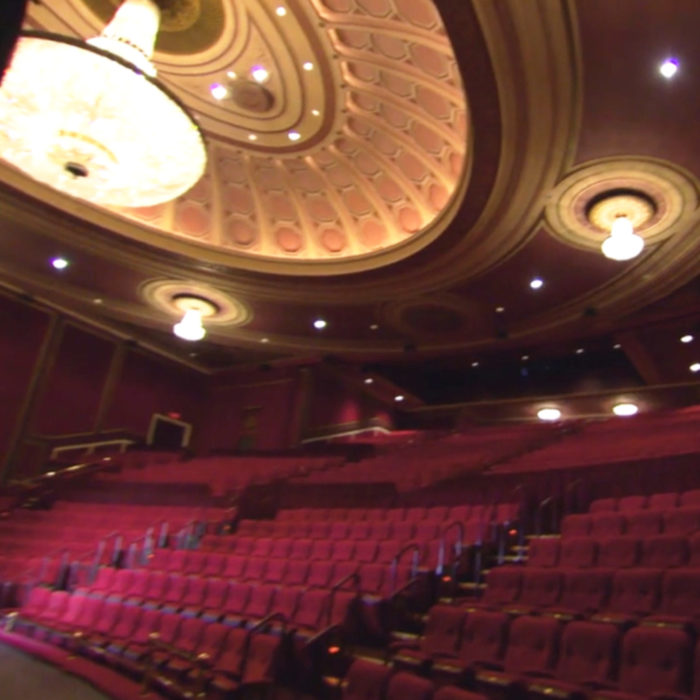
Broadway Theater (interior)
overview
Opened in 1924 as a motion picture/vaudeville house, the Broadway Theater began presenting legitimate theater in 1930. Major LGBT performers and creators associated with this venue include Raoul Pene Du Bois, Jerome Robbins, Mary Martin, Arthur Laurents, Irene Sharaff, Joel Grey, Linda Hopkins, and Yves Saint-Laurent, among others.
The theater’s historic front facade was covered in 1991, but its large historic interior survives.
History
The Broadway Theater was opened in 1924 as a motion picture/vaudeville house and began to present legitimate theater in 1930. Over the decades this theater has had a large number of hit plays with LGBT associations, many of which were transferred here after opening at other theaters:
- Carmen Jones (1943-45), with costume design by Raoul Pene Du Bois
- Song of Norway (1946), with musical adaptation and lyrics by George Forrest and Robert Wright
- High Button Shoes (1948-49), choreographed by Jerome Robbins, and with scenic design by Oliver Smith, and costume design by Miles White (opened at the New Century Theater; Best Choreographer Tony Award)
- South Pacific (1953-54), with actor Mary Martin (opened at the Majestic Theater; Best Musical and Best Actress Tony Awards)
- The Music Man (1957-61), with costume design by Raoul Pene Du Bois (opened at the Majestic Theater)
- West Side Story (1959) by Arthur Laurents, and with music by Leonard Bernstein, lyrics by Stephen Sondheim, choreography by Jerome Robbins and Peter Gennaro, scenic design by Oliver Smith, costume design by Irene Sharaff, and with actor Larry Kert (opened at the Winter Garden Theater; Best Scenic Design and Best Choreography Tony Awards)
- Gypsy (1959-60) by Arthur Laurents, directed by Jerome Robbins, with lyrics by Stephen Sondheim, and costume design by Raoul Pene Du Bois
- My Fair Lady (1962), with production design by Oliver Smith and costume design by Cecil Beaton (opened at the Mark Hellinger Theater; Best Musical, Scenic Design, and Costume Design Tony Awards)
- Funny Girl (1966-67), with costume design by Irene Sharaff (opened at the Winter Garden Theater)
- Cabaret (1968-69) based on I Am a Camera by John Van Druten (which was based on stories by Christopher Isherwood), with music and lyrics by John Kander and Fred Ebb, and with actor Joel Grey (opened at the Broadhurst Theater; Best Musical, Best Composer and Lyricist, and Best Featured Actor in a Musical Tony Awards)
- Mame (1969-70) based on a novel by Patrick Dennis (Edward Everett Tanner III), with music and lyrics by Jerry Herman, and costume design by Robert Mackintosh, and with lighting design by Tharon Musser (opened at the Winter Garden Theater)
- Purlie (1970), with actor Linda Hopkins
- Fiddler on the Roof (1970-72, opened at the Imperial Theater), directed and choreographed by Jerome Robbins (Best Direction of a Musical and Best Choreography Tony Awards)
- Candide (revival, 1974-76), with book adapted by Hugh Wheeler (Best Book of a Musical Tony Award), music by Leonard Bernstein, additional lyrics by Bernstein, John Latouche, and Stephen Sondheim, and lighting design by Tharon Musser
- The Wiz (1977-79), with songs and lyrics by Luther Vandross and others, and lighting design by Tharon Musser, and with actor André De Shields
- Miss Saigon (1991-2001), with musical staging by Bob Avian
Other shows by LGBT creators and with LGBT performers at the Broadway Theater included:
- The New Yorkers (1930-31), with music and lyrics by Cole Porter
- Earl Carroll’s Vanities (1932), with scenic and costume design by Vincente Minnelli
- Too Many Girls (1940), with lyrics by Lorenz Hart, and costume design by Raoul Pene Du Bois, and with actor Van Johnson (opened at the Imperial Theater)
- This is the Army (1942), co-choreographed by Nelson Barclift
- Lady in the Dark (revival, 1943), with costume design by Irene Sharaff
- Ballet Theater (1946), with scenic design by Oliver Smith and costume design by Irene Sharaff and Kermit Love, and with dancers Hugh Laing, Jerome Robbins, Dick Beard, Antony Tudor, and Harold Lang
- Beggar’s Holiday (1946-47), by and lyrics by John Latouche, with orchestration supervised by Billy Strayhorn, and with production design by Oliver Smith
- As the Girls Go (1949-50; opened at the Winter Garden Theater), choreographed by Hermes Pan
- Oklahoma! (revival, 1951), based on the play Green Grow the Lilacs (1931) by Lynn Riggs, and with costume design by Miles White
- The Green Pastures (revival, 1951), with an all-Black cast and Hall Johnson as choral musical director
- The Saint of Bleecker Street (1954-55), with music, lyrics and libretto by Gian Carlo Menotti, and with Lincoln Kirstein as production supervisor, and Thomas Schippers as musical director and orchestra conductor
- Mr. Wonderful (1956-57), with scenic design by Oliver Smith and costume design by Robert Mackintosh
- Kean (1961-62), with music and lyrics by George Forrest and Robert Wright, staged and choreographed by Jack Cole, and with scenic and costume design by Ed Wittstein
- I Can Get It for You Wholesale (1962), with actor Harold Lang
- The Girl Who Came to Supper (1963-64), based on a play by Terence Rattigan, and staged by Joe Layton, with music and lyrics by Noel Coward, scenic design by Oliver Smith, and costume design by Irene Sharaff
- Tovarich (1963), with dancer Tommy Abbott
- Zizi (1964-65), with costume design by Yves Saint-Laurent
- Baker Street (1965), with scenic design by Oliver Smith
- The Devils (1965-66), with scenic design by Rouben Ter-Arutunian, and with actor James Coco
- The Happy Time (1968), with music and lyrics by John Kander and Fred Ebb, costume design by Freddy Wittop, and with actor Michael Rupert
- Guys and Dolls (revival, 1976-77), directed and choreographed by Billy Wilson
- Zorba (revival, 1983-84), with music and lyrics by John Kander and Fred Ebb
The historic front façade of the Broadway Theater was covered in 1991, but the large historic theater interior survives.
Entry by Jay Shockley, project director (June 2019, with multiple additions).
NOTE: Names above in bold indicate LGBT people.
Building Information
- Architect or Builder: Eugene DeRosa
- Year Built: 1924
Sources
“The 1st List of: Gay/Lesbian/Bi Industry People, Both in Front and Behind the Camera,” Internet Movie Database, May 31, 2013.
Adam Hetrick, “The Work of Broadway’s Gay and Lesbian Artistic Community Goes on Display Nov. 14 When the Leslie/Lohman Gay Art Foundation Gallery Presents ‘StageStruck: The Magic of Theatre Design’,” Playbill, November 14, 2007.
Internet Broadway Database.
Do you have more information about this site?
This project is enriched by your participation! Do you have your own images of this site? Or a story to share? Would you like to suggest a different historic site?
